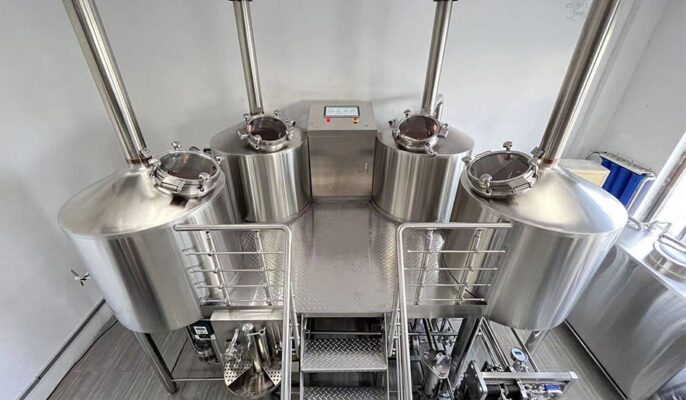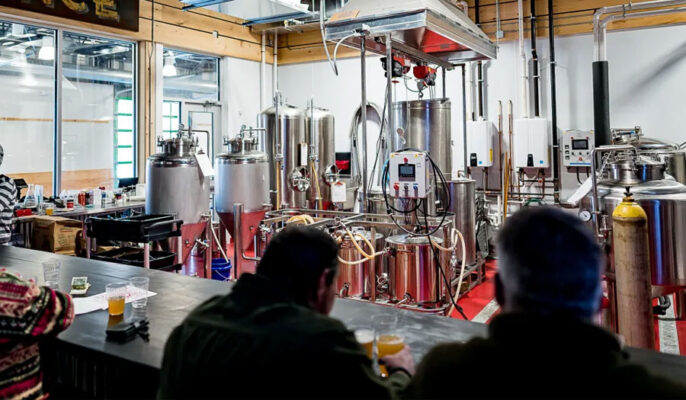When you decide to open a craft brewery, it’s important to choose a location where you’ll have repeat customers and attract new customers, which is critical to the success of your craft brewery. In recent years, with the upgrading of consumption, the craft beer industry has emerged. More and more people like to drink craft beer, and at the same time, more and more people are planning to enter this industry and open a craft brewery of their own. Micet Group is a professional beer equipment manufacturer. This guide will discuss how to choose a location. Let’s take a look next.
Learn local laws and regulations
When you are considering where to open a craft brewery, the first thing you need to learn and understand is the laws in your state. Each state has its own set of laws and regulations that determine where craft breweries can and cannot open. State laws can help you understand where in-town craft breweries are allowed and, most , where breweries are prohibited. Although laws vary from state to state, most of these restricted areas are located near schools and churches. You can get this information through your local authority’s website as this is usually listed information.

Understand target customer data
Understanding your target customers is crucial. Are you trying to cater to a younger, more fashionable crowd, or are you targeting older, more affluent consumers? First, consider age and income. By identifying your target audience, you can select an area surrounded by qualified potential customers.
Additionally, assessing your audience’s interests and tastes is crucial. Are they an adventurous beer drinker eager to try new styles? Or do they prefer traditional beer? By researching the local craft beer scene, you can find spots that resonate with your potential customers’ preferences.
No matter who your audience is, it’s also important to consider factors like parking and accessibility. The last thing you want is for customers to be unable to find parking nearby, or for the parking space to be so far away that it is difficult for people with disabilities or limited mobility to find you.
Placing yourself in a walkable area will improve your accessibility and visibility. Walkable neighborhoods have many benefits, including:
- Safety
- Better culture
- Stronger economy
- More sustainable
Factors to consider when choosing a craft brewery location
Geographical location
For new breweries, location is important. We need to consider the relationship between factory location and sales location. The closer the distance, the better the transportation. pay attention to the surrounding environment of the factory site, such as whether there are manure plants, orchards, toxic factories, etc. Breweries must stay away from these facilities or brewing quality will suffer. Also, be careful to stay away from centers of infectious diseases.
Choosing a location close to a major road is critical to a brewery’s success. Not only does it increase visibility, but it also makes it easy for customers to find you. Additionally, it streamlines the delivery process when delivering products to local bars, restaurants, and stores. In short, being close to major roads is good for both you and your customers.
Close to raw materials
When choosing a location for your craft brewery, consider the distance to the raw materials you need. Can local farmers provide you with hops, barley, and other essential ingredients? Sourcing ingredients saves on shipping costs and allows you to showcase the region’s unique flavors. Distance from packaging and shipping suppliers is another factor to consider. Being close to these resources can help you save on shipping costs and ensure your products are packed and shipped.

Estimate utility costs
Energy cost
Running a craft brewery means you use a lot of energy to keep your equipment cool during the brewing process, from mashing to fermentation to bottling. If you’re planning to buy a brewery owned by someone else, you can get last year’s usage report from the utility company and estimate your energy use for this year. If you’re opening a new craft brewery, get estimates and rates so you can work with the brewery to estimate energy costs.
Water source
Beer brewing cannot be separated from water. Whether it’s brewing water or other water in the factory, it’s very expensive. We know that brewing water must at least meet drinking water standards, but generally do not use purified water or distilled water to brew beer, because the ion content of purified water or distilled water is too low. In the words of some craft beer experts, “The brewed beer No bones.” So in the brewery site selection process, we need to consider what kind of water source I’m going to use for brewing, and what’s the water quality at that location? The quality of water determines the requirements for water treatment equipment after the factory is built, and the quality of water has a significant impact on the taste of beer. So, water quality testing can be conducted before determining the site of the plant, and decisions can be made on the water quality analysis report.
Understand your craft brewery space needs
When choosing the right craft brewery location, the biggest factor to consider is space. Generally speaking, the larger the building, the higher the price. So, we have to check how much space we need. Craft breweries produce less than 100,000 gallons of craft beer per year, but even small-batch brewing equipment requires a lot of space. The best way to do this is to conduct a break-even analysis. How much beer do you need to produce/sell to break even? Once the break-even analysis is complete, capacity and production requirements can be addressed.
Of course, you can also consult the beer equipment manufacturer and they will also be able to help you. Engineers can help determine whether you need 500L beer equipment or 1000L beer equipment, as well as the number and capacity of fermentation tanks you need. There is another important thing you need to keep in mind when purchasing brewery equipment: the height of the building. Fermentation tanks range from 5-9 feet in height, and brewery equipment varies depending on design height. If a brewery has a limited building height, it will need wider equipment to make up for it, which means more square footage.
Design your craft brewery
As you begin to narrow down your search for the right facility, you need to determine whether the building is conducive to brewing beer. Now that you have a rough idea of how many square feet you’ll need, you can create a simple blueprint for your building and determine if it’s suitable for brewing beer. This is another good time to get a brewery engineer involved, as CAD drawings are more professional than drawings on a napkin. The driving factor behind the rapid growth of the craft beer industry is premiumization. Premium means consumers are willing to pay higher prices for products they consider unique. Successful craft breweries don’t sell great beer, they sell stories. When you’re ready to make your final selection, look for craft brewery equipment that’s like your brand.




